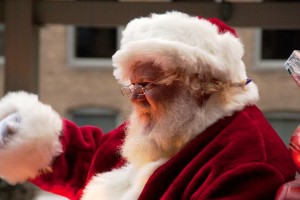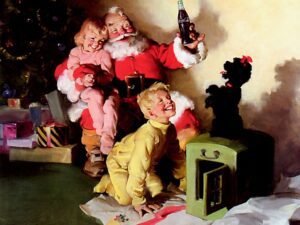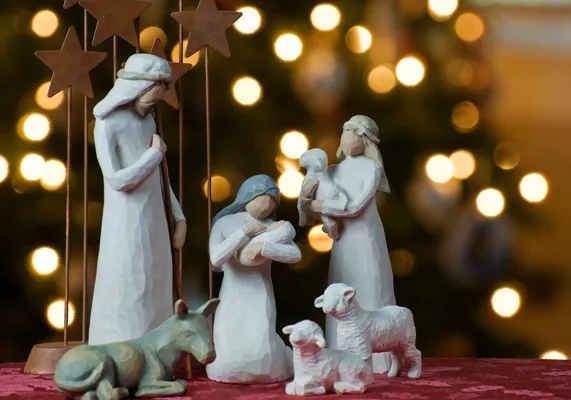
It’s the time of year when Christians commemorate the birth of Jesus, children wait impatiently for the arrival of Santa Claus, shoppers everywhere spend billions on gifts, and retail bosses rub their hands with glee.
How did we come to make such a big deal about December 25th?
Some Christmas traditions originate from the celebration of the Winter Solstice, when pagan feasts and sacrifices marked the revival of the sun on the shortest day of the year, which falls on December 21st.
However, the concept of Christmas as we know it came much later. The exact date and month of Jesus Christ’s birth are not known, though by the mid 4th Century the western Christian Church had placed it on December 25 – a date later which was later adopted in the east
Despite its religious roots, Christmas is now a cultural and commercial phenomenon across the world, embraced by many non-Christians as an opportunity to make merry, spend time with family and give presents.

By the end of the 19th Century, Christmas was fully recognised by employers as a holiday and we can thank Queen Victoria for many of our yuletide customs.
Her marriage to Prince Albert meant that German traditions, such as putting up Christmas trees, were passed on and soon became the norm in the UK. Christmas cards were invented in the 1840s and the sentiment caught on with children across the country as they began to make their own.
Crackers were first created by a British sweet connoisseur, Tom Smith, who was inspired after a trip to Paris in 1840. First intended to hold sweets, the sweets were later replaced with small gifts and paper hats.
Decorations became more and more elaborate throughout the Victorian period, as did presents. Originally, gifts were modest and given at New Year but the Victorians gradually changed this once Christmas became popular.
Our traditional Christmas Day feast was created before the Middle Ages but only became a fixed feature in Victorian times. Christmas dinner varied due to class, and originally mince pies contained meat but those in high society later changed this to suit their taste.

The centrepiece of Christmas dinner also developed during the Victorian era. Originally, roast beef and goose were eaten but this changed to turkey as it better suited the size of middle class families. Charles Dickens’ did much to popularise these traditions when he encompassed the spirit of the season in his classic book ‘A Christmas Carol’.
Britain had adopted the idea of Saint Nicholas, or ‘Sinterklaas’ as he was known from Dutch folklore. ‘Sinterklaas’ was originally the patron saint of many things, including children.
This character eventually developed into Santa Claus and became the giver of small gifts. Santa was originally described as having a white beard and a green cloak. Coca-Cola later changed this image in the 1930s, when the company hired American artist Haddon Sundblom to design their winter adverts, and his depiction of a red and white Father Christmas eventually stuck.

